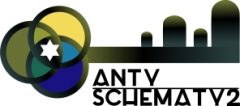Anagram Publishing House took patronage over the project, “Matzevot of Tarnów – camp for volunteers. Edition 2 “. We are very grateful!
Category: Locations
 It is the last day of the inventory at the Jewish cemetery in Tarnów in the framework of the project “Matzevot of Tarnów – camp for volunteers. Edition 2 “as part of a task implemented by the National Heritage Board in Poland,” Volunteering for Heritage 2017 “. We sincerely thank the participants of the project: students of the Institute of Jewish Studies at the Jagiellonian University and our wonderful volunteers from Tarnów’s schools!
It is the last day of the inventory at the Jewish cemetery in Tarnów in the framework of the project “Matzevot of Tarnów – camp for volunteers. Edition 2 “as part of a task implemented by the National Heritage Board in Poland,” Volunteering for Heritage 2017 “. We sincerely thank the participants of the project: students of the Institute of Jewish Studies at the Jagiellonian University and our wonderful volunteers from Tarnów’s schools!
We will soon be sharing our findings with you.
 This week we have completed the inventory of the tombstones located in the E-quarter of the Jewish cemetery in Tarnów. We are now waiting to develop inscriptions and prepare a publication. We sincerely thank our wonderful volunteers for their work and commitment during the project, “Matzevot of Tarnów – camp for volunteers. Edition 2”!
This week we have completed the inventory of the tombstones located in the E-quarter of the Jewish cemetery in Tarnów. We are now waiting to develop inscriptions and prepare a publication. We sincerely thank our wonderful volunteers for their work and commitment during the project, “Matzevot of Tarnów – camp for volunteers. Edition 2”!
 July 24, 2017 at 17.00 – Sędziszów Małopolski
July 24, 2017 at 17.00 – Sędziszów Małopolski
Foundation AntySchematy2 invites to commemorate the 400 victims of the liquidated ghetto in Sędziszów, murdered and buried in the cemetery at Szkarpowa Str. and the commemoration of Mr. Edward Kocur – Guardian of the Jewish Cemetery in Sędziszów on the anniversary of his death
 AntySchematy 2, July 24th 2017- Commemoration of the 400 victims on the 75th anniversary of the liquidation of the ghetto in Sędziszów Młp. and the commemoration of the cemetery guard on the anniversary of his death – Edward Kocur.The Ghetto was liquidated on July 24, 1942. At that time in the Market Square and the Jewish cemetery, the Germans carried out mass executions of about 400 Jews from Ropczyce, Kolbuszowa and Mielec. About 1,500. Jews were deported to the ghetto in Dębica, from where they were transported to German Nazi death camps in Bełżec and Pustkow. The others were taken to the ghetto in Rzeszow. Only one person survived the massacre.
AntySchematy 2, July 24th 2017- Commemoration of the 400 victims on the 75th anniversary of the liquidation of the ghetto in Sędziszów Młp. and the commemoration of the cemetery guard on the anniversary of his death – Edward Kocur.The Ghetto was liquidated on July 24, 1942. At that time in the Market Square and the Jewish cemetery, the Germans carried out mass executions of about 400 Jews from Ropczyce, Kolbuszowa and Mielec. About 1,500. Jews were deported to the ghetto in Dębica, from where they were transported to German Nazi death camps in Bełżec and Pustkow. The others were taken to the ghetto in Rzeszow. Only one person survived the massacre.
On August 17, 2019, the 2nd Memorial Day was dedicated to the Jewish community of Jasło. All gathered at the gate of the cemetery in Jasło, where they were welcomed by the president of the AntiSchemes 2 Foundation Tomasz Malec and dr hab. Leszek Hońdo from the Institute of Jewish Studies of the Jagiellonian University. The aims of the project “Before it is too late”, which today’s commemoration is part, were presented, after which the assembled went to the railway station, where Magdalena Białek recalled the history of the deportation of Jews from Jasło to the extermination camp in Bełżec and read the names of the victims found at the Yad Vashem Memorial Institute. The central element of the celebration was the unveiling of the commemorative plaque and the speech of the representative of the descendants of the Jews from Jasło, Georges Feniger, who in 2017 after 50 years first came to Jasło, where his family came from and called for bridges to allow the younger generations to learn about the facts of the tragedy that destroyed so many lives and hurt generations of survivors. The last element of commemoration was the lecture by dr hab Leszek Hońdo presenting the specifics of the Jewish cemetery in Jasło. There were many prominent people at the ceremony such as: Adam Pawluś – Foreman of the District in Jasło, Stanisław Pankiewicz – Deputy Foreman, Patrycja Bimkiewicz – Head of the Promotion, Culture, Sport and Tourism Department at the City Council in Jasło, Hubert Czerwonka from the City Council, Agata Koba City Council spokesman, Katarzyna Koczwara representing the management of the Municipal Public Library in Jasło, major Piotr Chmielowski representing the management of the Prison in Jasło, residents of Jasło, Nowy Żmigród, representatives of the Righteous family – family Pikul, Leaders of the Dialogue Forum and representatives of local media. After the ceremonies, the participants went to a restaurant at U Schabińska’s restaurant, on which a plaque was placed. We are extremely grateful to everyone who contributed to the fact that this commemoration could have taken place. In the speeches of both local authorities and organizers, the leitmotif was to remind that Holocaust victims were Polish citizens, and now, looking at the past, learning and accepting it, we should build foundations for dialogue for future generations.

“Project co-financed under the National Heritage Institute program – Together for heritage”



















